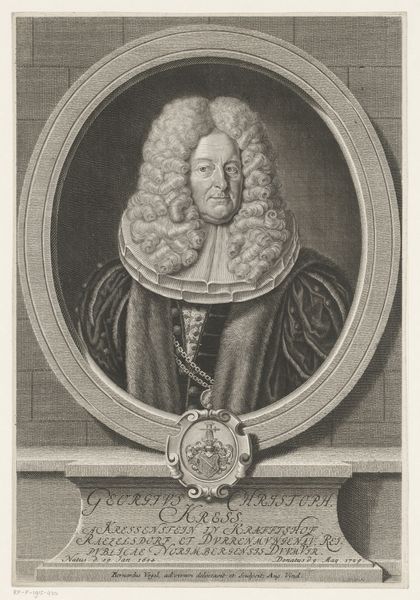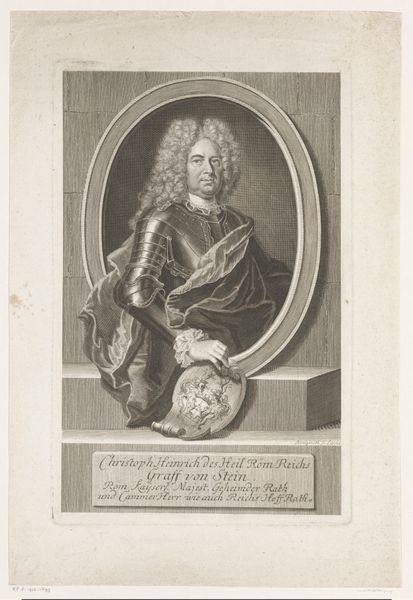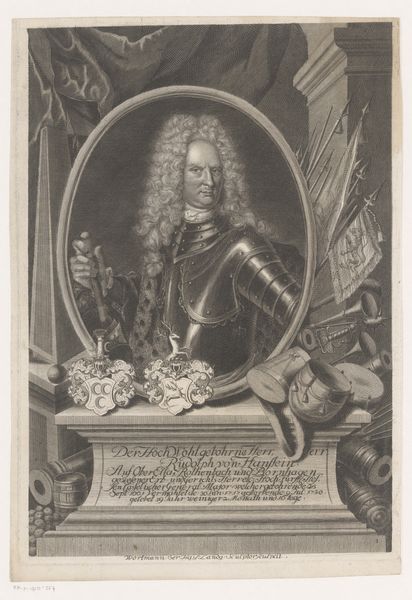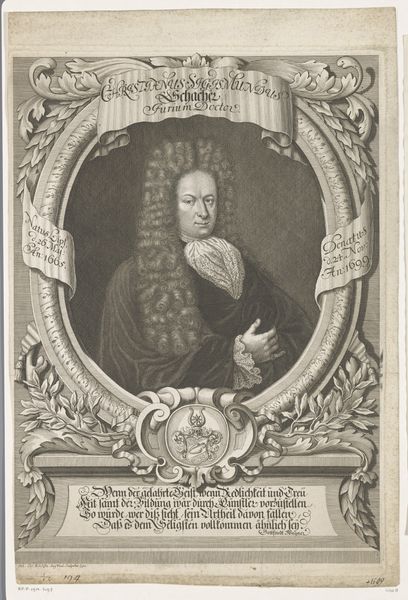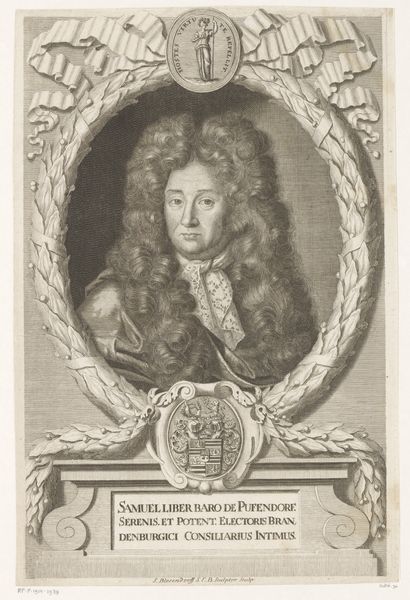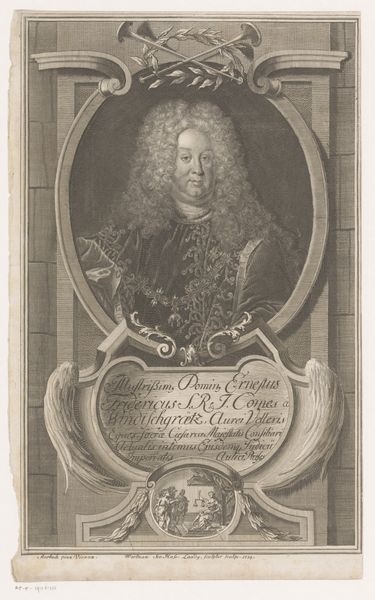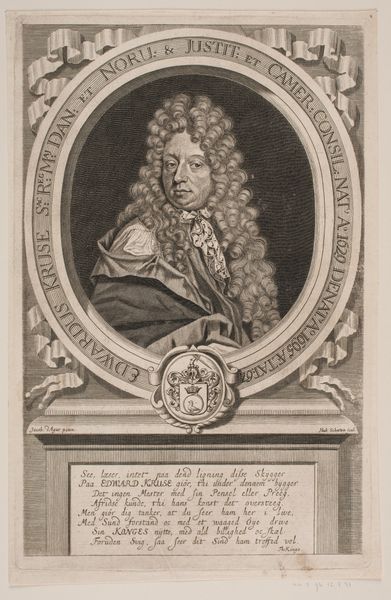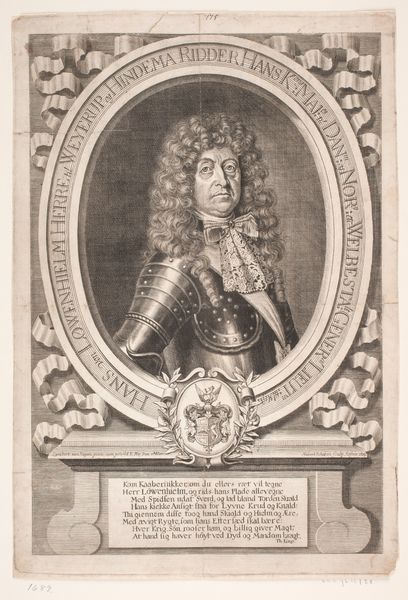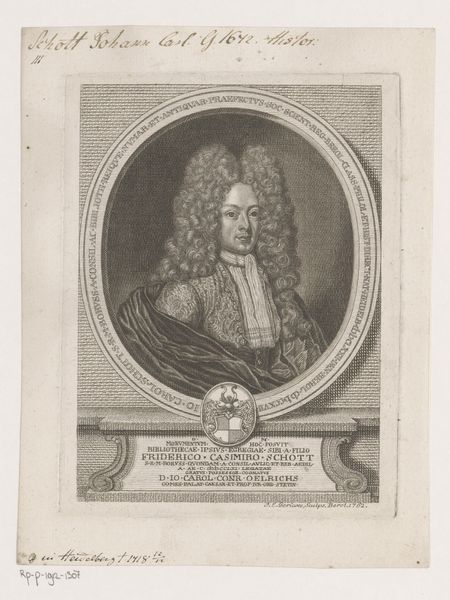
engraving
#
portrait
#
baroque
#
history-painting
#
engraving
Dimensions: height 351 mm, width 238 mm
Copyright: Rijks Museum: Open Domain
Curator: Standing before us, we have an engraving, a portrait, of Georg Christoph von Wachholtz. Johann Wilhelm Michaelis completed this work sometime between 1680 and 1737. Editor: Immediately, I’m struck by the sheer ornamentation. The wig is enormous, the armor imposing, and it all communicates power and status—the epitome of baroque sensibility, perhaps? Curator: Absolutely. But let’s dig a little deeper. This image is, in its way, an artifact documenting not just Wachholtz but also the structures of authority he occupied. His armor speaks to a tradition of martial prowess, while the wig became emblematic of courtly sophistication in his time. Editor: So, it’s a carefully constructed image, participating in the visual language of power prevalent in that period. Do you see any potential points of intersection here in understanding the contemporary visual economies? Curator: Consider how his titles and lands—meticulously etched at the base of the image—reflect his place in the Prussian socio-economic landscape. In this view, this work shows how identity becomes intertwined with property ownership and inherited status. The historical context reveals that landownership translated directly to political influence. Editor: You are inviting me to think about art as both object and instrument... the means of asserting control as much as an expression. Do you see his likeness challenging societal notions of masculinity and gender, since wigs and finery have shifted in definition and purpose across generations? Curator: In certain modern frameworks, it could offer critique regarding patriarchal and class-based hierarchies. Its symbolism opens space for discourse on equity and decolonization within systems of representation, don't you think? Editor: I am interested to learn more. Reflecting on this engraving makes me mindful of the enduring relationship between imagery and power, its role in shaping historical consciousness. Curator: And for me, this engraving serves as an emblem—an entry point to exploring larger narratives surrounding identity and inherited privilege within our shared histories.
Comments
No comments
Be the first to comment and join the conversation on the ultimate creative platform.


